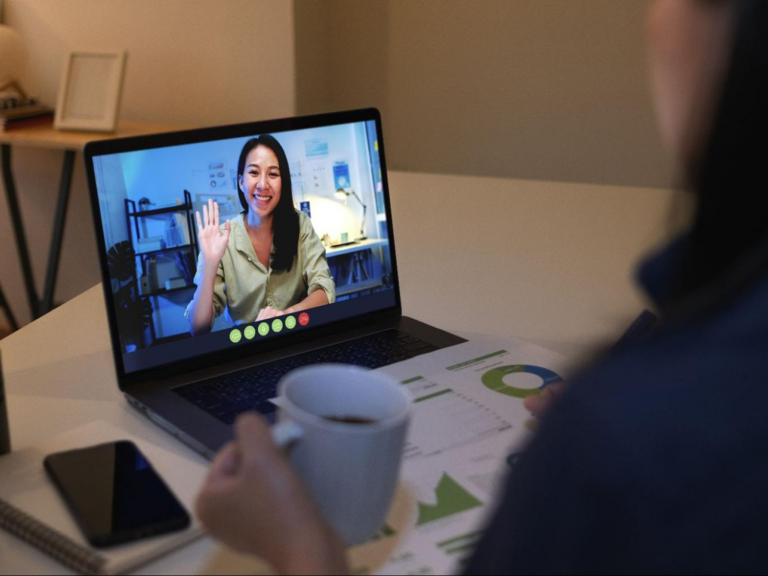An ineffective workspace hinders productivity and lowers employee engagement. Poor design creates communication issues and stifles creativity. What's the solution? The right organization of office space and modern conference rooms.
In this article, we reveal how thoughtful design fosters a productive environment, enhances communication, and reduces employee turnover, transforming the office into a driver of corporate success.
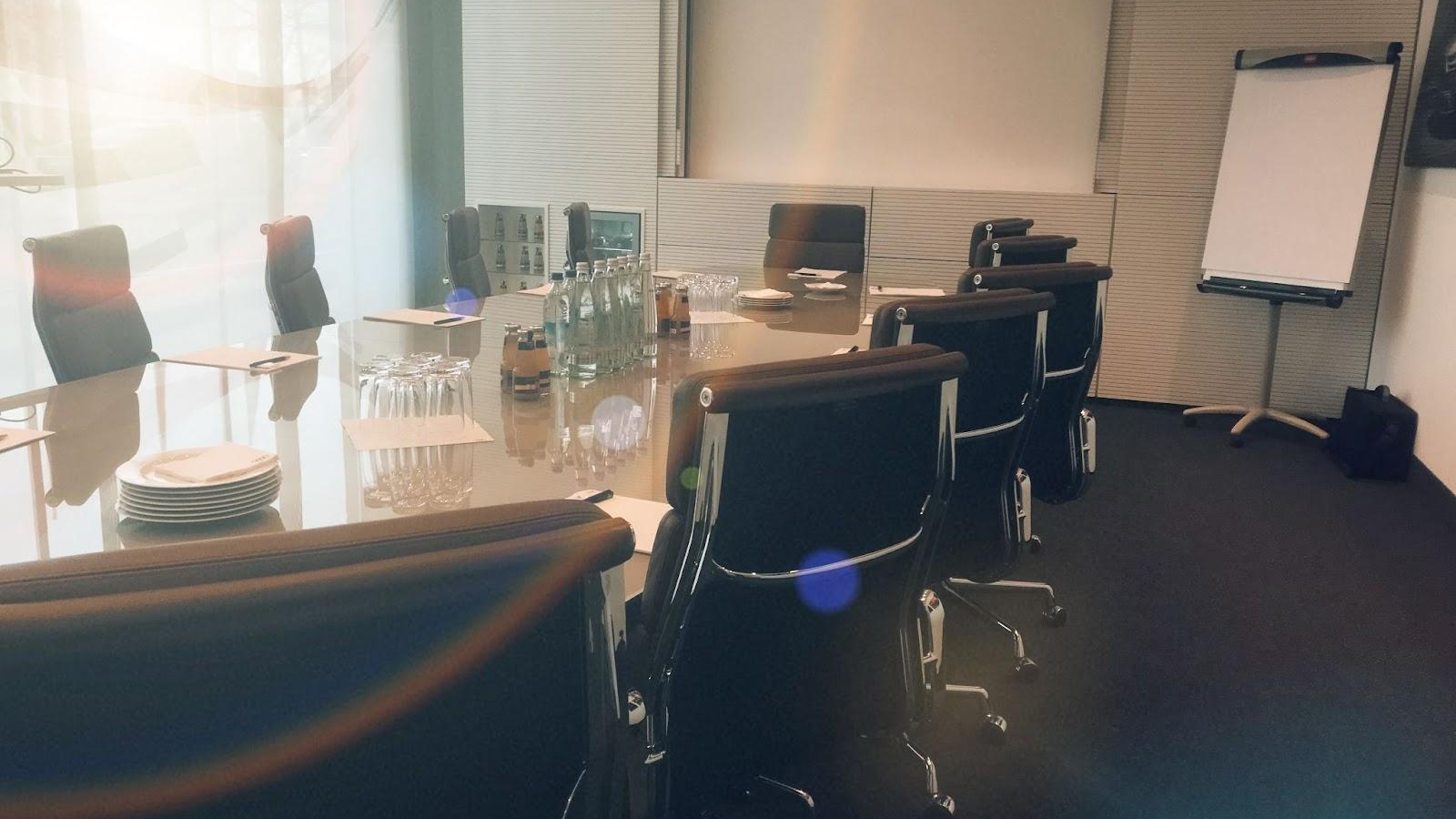
Why Office Design Matters for Productivity
The workspace influences focus, creativity, and job satisfaction. Well-designed offices enhance communication, inspire ideas, and keep teams engaged, while poor layouts can hinder concentration, strain relationships, and cause employee turnover.
Conference rooms are crucial as they serve for group work, client calls, and brainstorming. Investing in modern conference room features — such as ergonomic seating, modular furniture, and interactive technology — leads to:
Investing in modern conference rooms is essential because these spaces serve as the hub for collaboration, client interactions, and brainstorming. Upgrading conference rooms with ergonomic seating, interactive technology, and flexible layouts not only boosts team productivity and engagement but also delivers key benefits, including:
- Strengthening teamwork and communication: Employees actively exchange ideas, quickly finding common ground to achieve shared goals.
- More effective problem-solving: Collaborative solution-finding enables prompt identification and elimination of challenges, speeding up decision-making.
- Active employee participation and improved well-being: Employees feel valued and are more willing to share their ideas, creating a positive team atmosphere.
📌 According to CMD Ltd.'s original research on meeting room design and technology, companies that invest in adaptable meeting spaces see a significant boost in employee satisfaction and productivity.
Key Considerations for Office & Conference Room Layout
For a hybrid workspace, balance areas for focused work and collaboration. Provide one conference room per 10 employees, mix small huddle rooms with larger meeting spaces, and include informal lounges. Use modular elements like movable walls and reconfigurable furniture to adapt as needs change.
Meeting Room vs. Conference Room: Choosing the Right Fit for Your Needs
| Meeting Room | Conference Room |
| 2–6 people | 6+ people |
| Flexible layout | Usually a fixed setup |
| Basic AV (display, speakerphone) | Advanced AV (multiple displays, mics, cameras) |
| Ideal for quick check-ins or small-group collaboration | Ideal for formal presentations and larger group discussions |
Conference Room Design Ideas for Maximum Efficiency
Prioritize Acoustics
- Install soundproof materials like acoustic panels or carpets.
- Aim for a 0.6–1.0-second reverberation time (ideal for speech clarity).
- Consider white noise systems to mask distracting background sounds.
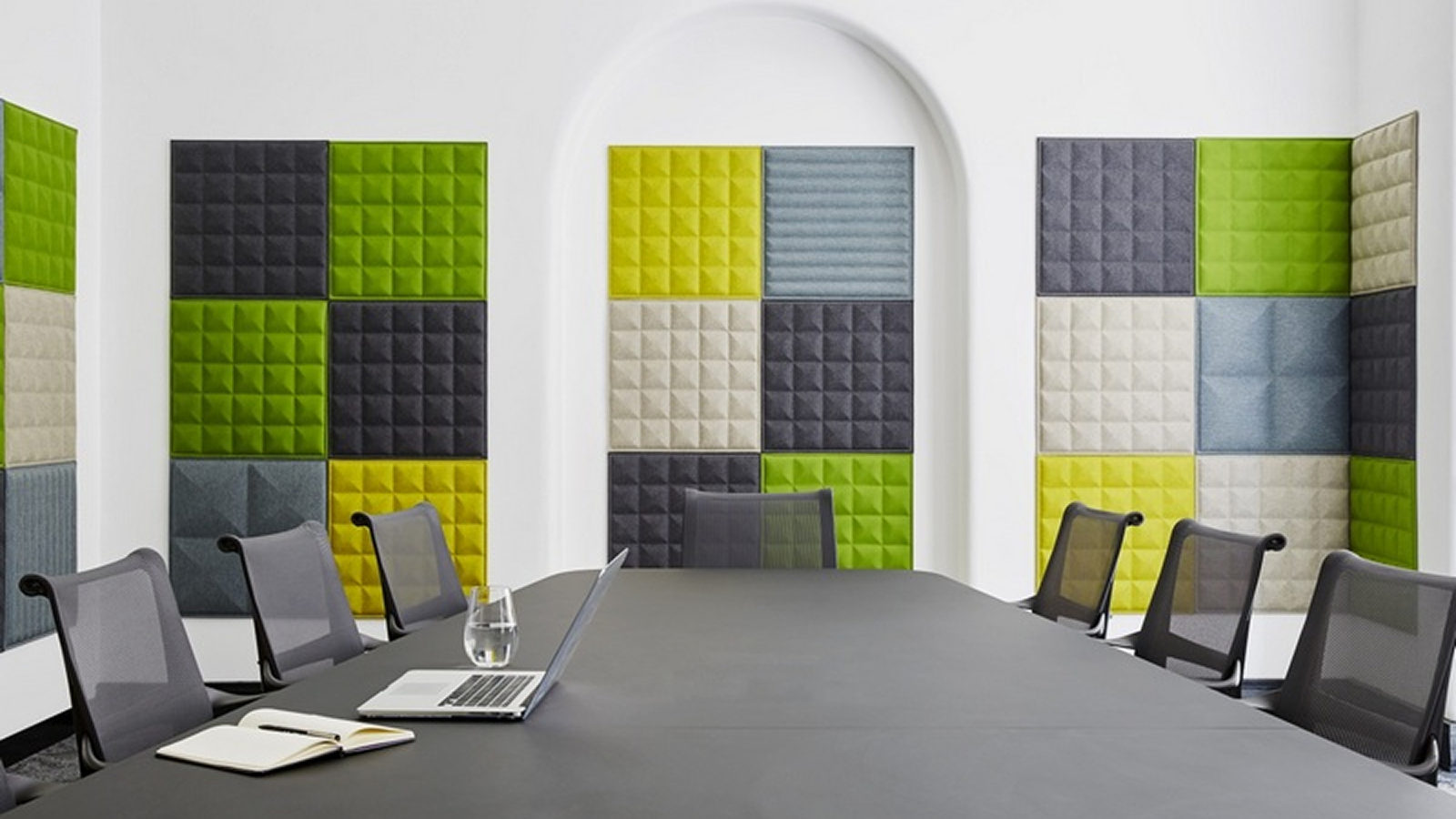
Invest in the Right Tech
- Set up large, high-resolution displays for sharing content.
- Provide wireless screen sharing and BYOD (Bring Your Own Device) support.
- Equip the room with high-quality cameras and microphones for clear audio and video.
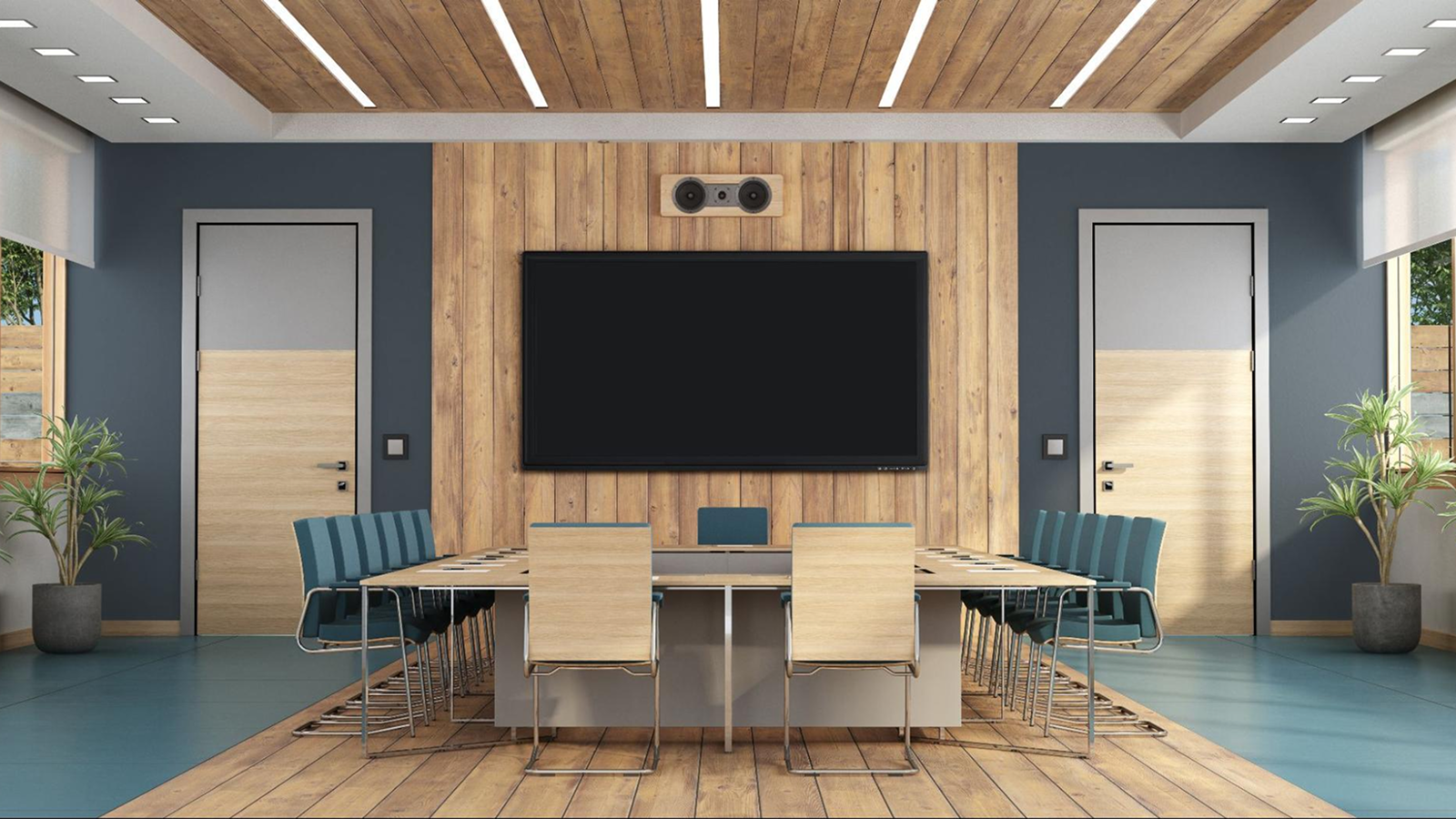
Choose Ergonomic Furniture
- Opt for chairs with adjustable features and proper lumbar support.
- Choose fixed tables and seating to maintain a consistent layout for standard group sizes.
- Use durable, easy-to-clean materials that stand up to frequent use.
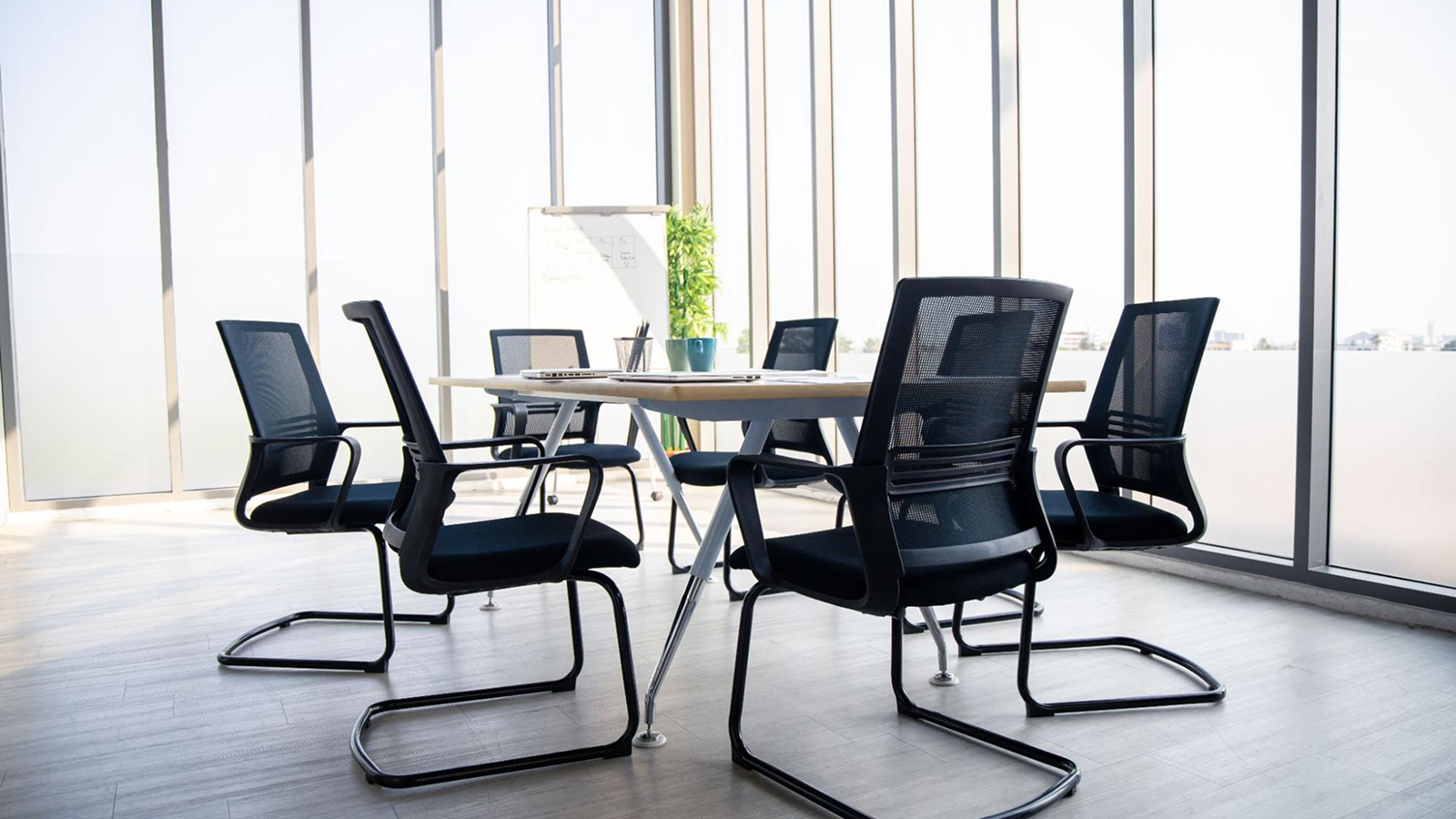
Optimizing Video Conferencing
- Install a remote-controlled camera that can be easily adjusted to suit the participants' viewing preferences. This camera rotates up to 270 degrees, ensuring wide coverage of the room.
- Use an external microphone for echo-free, high-quality audio.
- Set up screens with matte coatings so that the picture during the presentation is free of glare and distortion.
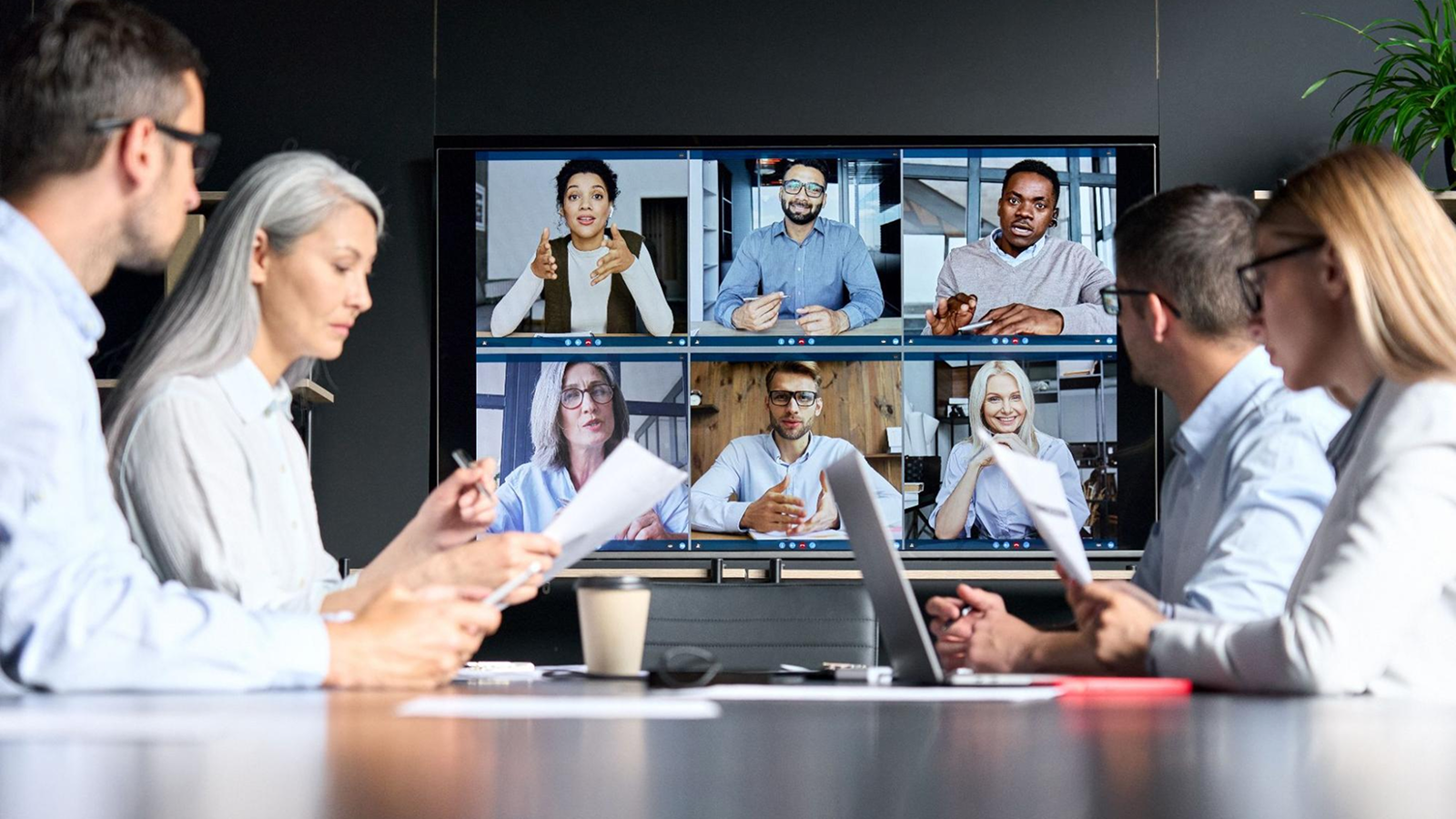
How Ergonomics Impacts Productivity in the Hybrid Workplace
Ergonomics in the hybrid workplace boosts comfort and productivity. Key points:
- Adjustable Furniture: Task chairs, sit-stand desks, and monitor arms to fit different body sizes.
- Flexible Meeting Options: Both sitting and standing arrangements for individual or group work.
- Smart Office Details: Adaptive climate control and systems will help adjust the temperature and light in the office to the current needs of the team.
✍️ According to a Grand View Research report, the rapid growth of the global smart office market is driven by the adoption of advanced technologies that tailor environmental conditions to individual preferences and occupancy levels.
Employee Well-Being & Comfort in Office Planning
Enhancing employee well-being involves more than just choosing the right furnishings. Reflect on:
- Biophilic design. Add plants or natural materials to ease stress and spark creativity.
- Varied work settings. Include quiet areas, phone booths, and lounge spaces for different work styles.
- Healthy amenities. Offer nutritious snack options, access to fitness facilities, and outdoor workspaces.
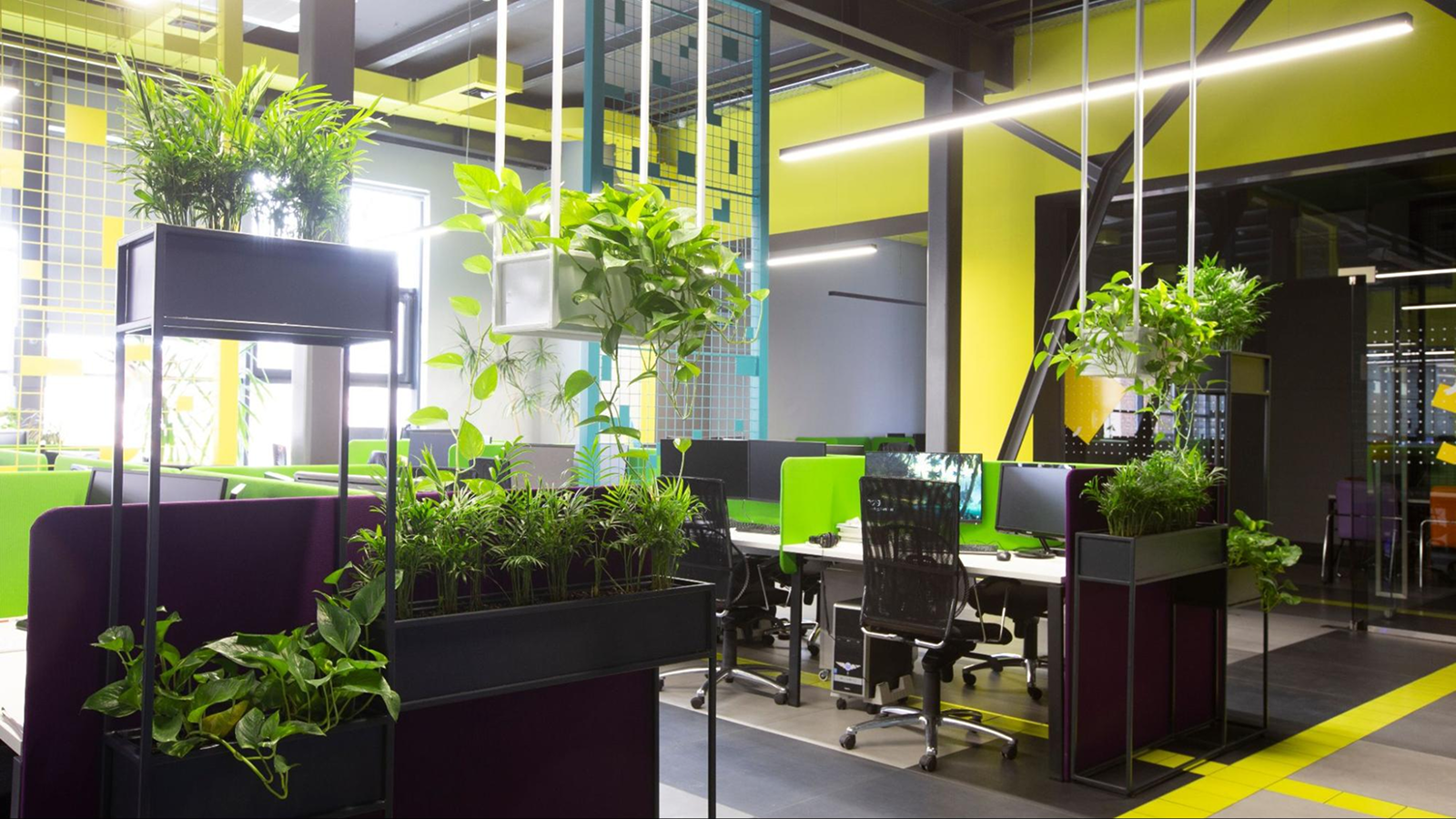
Must-Have Conference Room Technology for Modern Offices
Modern conference room technology is essential for productive meetings. Key tools include:
- Interactive whiteboards for real-time collaboration.
- Wireless screen sharing for streaming content from one device to another without the use of cables.
- Сommunications platforms that integrate video, chat, and file sharing.
- Meeting room scheduler display provides an easy way to manage bookings with real-time availability indicators at each room entrance. .
UnSpot booking display software significantly simplifies meeting room management by providing real-time availability information right at the entrance. Employees can instantly see the room’s status — whether it is available, occupied, or booked for a specific time — without needing to access the booking system app.

How to Plan a Budget for a Conference Room Upgrade and Calculate ROI
Upgrading a conference room is an investment that should benefit the company. To plan your budget properly and assess the return on investment (ROI), focus on three key aspects:
- How much will the upgrade cost?
- Which expenses are one-time, and which are recurring?
- How can you measure the return on investment?
1. How Much Does a Conference Room Upgrade Cost?
The cost depends on the room size and the required equipment:
- Small rooms (4–6 people): $5,000 – $10,000.
- Medium rooms (7–12 people): $10,000 – $20,000.
- Large rooms (12+ people): $20,000 – $60,000 or more.
The price is influenced by factors such as video conferencing equipment quality, acoustics, booking systems, and automation features.
2. What Are the One-Time and Recurring Costs?
One-Time Costs (paid once):
- Purchasing equipment: screens, cameras, microphones, speakers, control systems.
- Installation and setup.
- Integration with corporate services (e.g., Zoom, Microsoft Teams).
Recurring Costs (paid regularly):
- Software subscriptions (Zoom, Microsoft Teams, room booking systems).
- Maintenance and technical support.
- Equipment updates and improvements.
Annual recurring costs typically account for 10–20% of the initial equipment investment.
3. How to Assess the Benefits of an Upgrade?
To determine whether the upgrade is justified, measure its financial impact. Key metrics include:
- Time savings. Reliable equipment ensures that employees don't waste time troubleshooting connections or finding an available room.
- Usage frequency. If the room is booked more often, the investment is proving its value.
- Employee satisfaction. Improved acoustics, comfortable furniture, and high-quality connectivity make meetings more productive.
4. How to Calculate ROI?
ROI (Return on Investment) is calculated using the formula:

Example Calculation
Suppose a small conference room upgrade costs $10,000.
Expected annual benefits:
- Employee time savings: $5,000.
- Reduction in booking conflicts: $1,000.
- Increased employee satisfaction: $2,000.
Total annual benefits: $8,000.
Over two years, the total benefits would be $16,000, while the total cost (including maintenance and subscriptions) would be around $13,000.

Common Mistakes & How to Avoid Them
- Ignoring end-users: Gather feedback early from people who will use the rooms. Their insights can help you avoid features that look good on paper but fall flat in practice.
- Prioritizing trends over function: Make cost-effective choices that balance style with ergonomics, ROI, and ease of use.
- Underestimating total costs: Ask for detailed quotes, include a contingency fund, and plan for ongoing upgrades or replacements.
Scalability & Adaptability in Office Space Planning
In a hybrid workplace, the ability to quickly adjust your office layout is a major advantage. Here are strategies to stay flexible and future-proof:
- Modular furniture. Easily reconfigure desks, seating, and workstations as team sizes change or new projects arise.
- Flexible infrastructure. Raised access flooring and demountable walls make it simpler to reroute utilities or divide spaces without costly renovations.
- Sustainable features. Energy-efficient lighting and low-flow plumbing can lower environmental impact and operating costs over time.
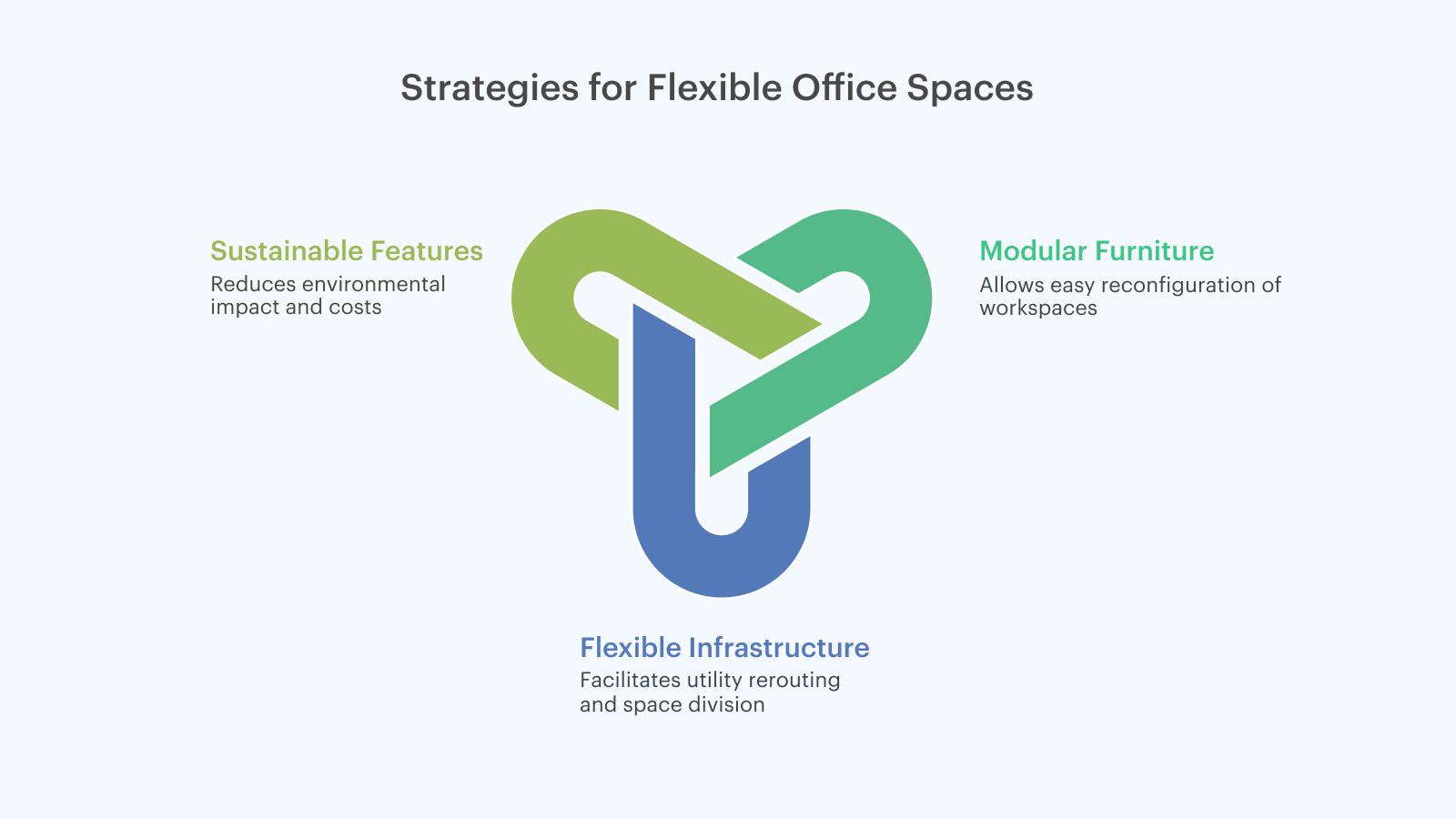
Case Study: a Real Life Example of an Optimized Office Space
Google’s London Headquarters
- Flexible Layout: Transforms meeting areas instantly with interactive whiteboards and wireless screen sharing.
- Transparency & Efficiency: Glass-walled conference rooms with real-time scheduling displays enhance collaboration and reduce downtime.
Microsoft’s Redmond Campus
- Hybrid Work Ready: Designed for both in-person and remote collaboration.
- Adaptive Spaces: Modular furniture and adjustable partitions reconfigure rooms for team huddles or training sessions.
- Unified Communications: Integrated platforms streamline video calls, chat, and file sharing.
FAQs
How do you plan a conference room?
Planning a conference room involves several key steps:
- Determine the number of employees and meeting types.
- Use movable walls and reconfigurable furniture for different meeting sizes.
- Incorporate ergonomic furniture, acoustic art panels, and interactive technology like Zoom or Microsoft Teams.
- Create collaborative spaces and ensure remote employees are accommodated.
- Use room scheduling displays and clear signage to make booking incredibly easy.
What Should Every Conference Room Have?
What Is Conference Room Technology?
Conference room technology boosts meeting efficiency and collaboration. Essential tools include:
- High-resolution displays and wireless screen sharing: For clear, seamless presentations.
- Quality cameras and microphones: Ensuring effective communication for all participants.
- Interactive whiteboards: Enabling real-time collaboration.
- Unified communications platforms: Integrating video calls, chat, and file sharing.
- Room scheduling displays and automation: Simplifying bookings and control adjustments.

